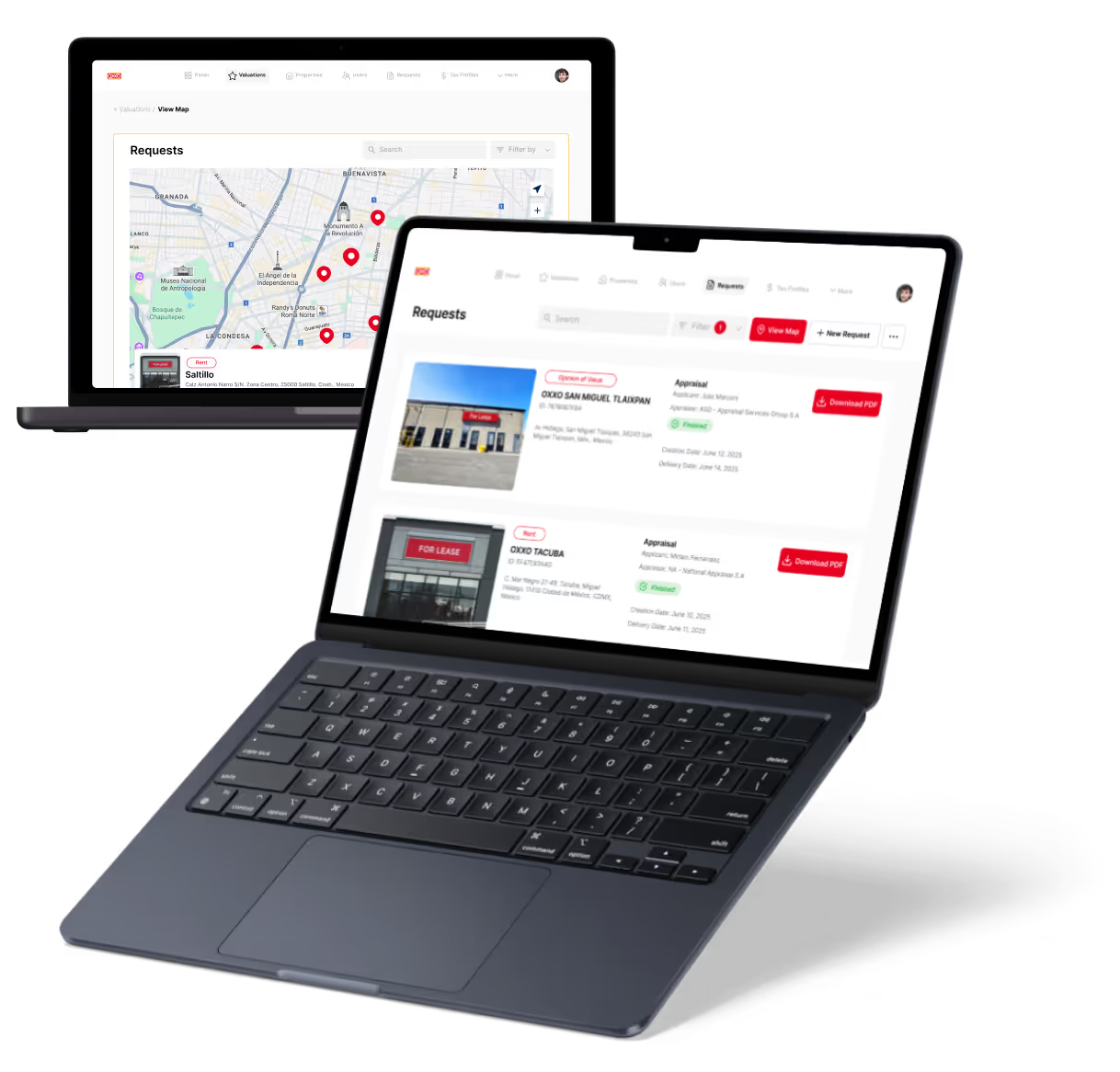Airtable vs Asana | 10 Factors to Decide the Best One
8 min
read
Compare Airtable vs Asana on ease of use, workflows, views, automation, and collaboration to pick the best tool for your team’s project management needs

Project management and data organization are key to team success. The global project management software market is expected to reach $9.8 billion by 2027, showing how important these tools have become.
Airtable and Asana are two popular platforms but serve different needs. Airtable blends spreadsheet flexibility with database power, great for custom workflows. Asana focuses on task management and team coordination, making project tracking simple.
This guide compares their ease of use, core features, automation, integrations, and collaboration options to help you choose the right tool to boost your team’s productivity.
Quick Comparison Table - Airtable vs Asana
1. What’s the core difference between Airtable vs Asana?
The core difference between Airtable and Asana is their main purpose.
Airtable is a flexible database tool that looks like a spreadsheet but works like an app. You can use it to store, organize, and connect different types of data. It’s great for building custom workflows, project trackers, or even mini apps without code.
Asana, on the other hand, is built mainly for task and project management. It helps teams plan, assign, and track tasks with timelines, due dates, and boards. It focuses on collaboration and making sure projects move forward.
So, if you need a structured way to manage data or build a custom workflow, go with Airtable. But if your team wants to organize tasks, track progress, and collaborate easily, Asana is the better choice. Each tool is powerful—but built for different jobs.
2. Ease of Use
Let’s see how beginner-friendly these tools are for new users and teams.
Is Airtable easy to learn for beginners?
Airtable feels like a spreadsheet, so it’s familiar to most users. You can enter data in rows and columns, just like Excel. But it also includes database features like linked records, field types, and views. This makes it more powerful but also adds some learning curve.
Beginners can start quickly using templates, but advanced features like formulas or automations may take time to understand. Its flexibility is a strength, but setting up a complex workflow might require planning. Overall, Airtable is easy to start with but takes effort to master for advanced use.
How simple is Asana for task management?
Asana is made for simplicity. You can sign up, create a project, and start adding tasks within minutes. The interface is clean and easy to follow, even for non-technical users. Tasks are organized into lists or boards, and you can assign them to team members with due dates and priorities.
Asana also offers a quick onboarding guide and helpful tooltips to guide new users. Most teams find it easy to adapt without extra training. If your main goal is managing projects and keeping tasks on track, Asana is very beginner-friendly.
Read more about:
3. Core Use Cases
Now let’s break down what each platform is best used for.
When should you use Airtable?
Airtable is best when you need a custom database or workflow that goes beyond simple task lists. You can use it for content calendars, inventory tracking, applicant management, or event planning. It supports linked tables, custom fields, and flexible views, which let you build systems that feel like mini-apps.
Airtable is great for teams that work with structured data and want to organize it in a way that fits their exact needs. If your workflow doesn’t fit into a typical task manager, Airtable gives you the freedom to build your own.
What is Asana best used for?
Asana is made for organizing projects and managing tasks. It works well for marketing teams, product development, HR planning, and more. You can assign tasks, set deadlines, and track progress using lists, calendars, or boards. It’s designed to help teams stay focused and aligned on daily work.
Asana shines when the process is clearly defined, and everyone needs to know what’s next. It’s not built for managing raw data or databases, but for teams who want structure and accountability, it works extremely well.
4. Views and Layout Options
Let’s explore how each platform displays your work and data.
What views does Airtable offer?
Airtable gives you multiple ways to view your data. You can switch between grid (spreadsheet-style), calendar, Kanban, gallery, Gantt, and timeline views. Each view helps you see your data from a different angle.
For example, use grid view for editing records, calendar view for deadlines, or Kanban for status tracking. You can also filter, sort, and group your records in each view. This flexibility makes Airtable powerful for both planning and execution. Whether you're organizing tasks, managing content, or tracking inventory, you can customize views to match your workflow.
What views are available in Asana?
Asana keeps things simple with four main views: list, board, timeline, and calendar. List view is best for teams who prefer a traditional task format. Board view works like Kanban, great for visualizing task status. Timeline shows how tasks relate over time, while calendar highlights upcoming deadlines.
Each view is easy to switch and adjust. You can filter tasks by assignee, due date, or tag. These views focus on project tracking and team collaboration. They’re perfect for keeping work structured and making sure nothing slips through the cracks.
Read more about:
5. Project Structure and Data Handling
Here’s how each platform handles organization and complexity.
How does Airtable handle data and structure?
Airtable works like a relational database. You can create multiple tables, each with different field types like text, checkboxes, dates, or file uploads. You can link records across tables and even roll up values to summarize data. For example, link a list of clients to multiple projects and track status updates.
Airtable’s structure lets you model complex systems without writing code. It’s perfect for managing large datasets or custom processes that need flexibility and structure. You can also use forms to collect data directly into your tables.
How is Asana structured for teams?
Asana uses a clear, task-based structure. Work is organized into projects. Inside each project, you create tasks, which can also have subtasks. Tasks can belong to teams or be grouped into portfolios for higher-level planning. Each task includes a description, due date, assignee, tags, and attachments.
Asana helps teams track goals, milestones, and dependencies easily. It doesn’t have relational database features like Airtable, but it excels at structured planning and team visibility. If your focus is task completion and workflow tracking, Asana keeps things organized and clear.
6. Automation and AI Features
Let’s compare how smart each tool is when it comes to saving time.
What kind of automation does Airtable support?
Airtable supports no-code automation through its Automations tool. You can create custom workflows like "When a record is updated, send an email" or "Create a Slack message when a task is complete." You can also add JavaScript-based scripting for more advanced logic.
Airtable lets you connect with external tools like Gmail, Slack, and Microsoft Teams. Automations run behind the scenes and save time on repetitive tasks. Whether you're updating records or sending reminders, Airtable helps you build custom logic without writing full code.
How smart is Asana’s automation?
Asana offers rule-based automation for everyday workflows. You can create rules like "Move task to Done when completed" or "Assign task when moved to a section." It also supports recurring tasks, dependencies, and project templates.
Recently, Asana introduced Bundles to group common automations and apply them to multiple projects. These features help reduce manual work and keep projects on track. Asana’s automation is easy to use and helps teams follow consistent processes without extra effort.
Do they include any AI features?
Yes, both platforms now include AI tools. Airtable AI helps summarize text, extract data, or auto-fill fields based on large data sets. It’s especially useful for document-heavy workflows and content pipelines.
Asana AI focuses on productivity. It can summarize tasks, suggest goals, and predict blockers. Asana also uses AI to surface important updates or recommend priorities. While both tools use AI differently, they are focused on saving time and helping teams work smarter.
Read more about:
7. Collaboration and User Permissions
Teamwork is essential—here’s how each tool supports collaboration and controls access.
Can teams collaborate easily on Airtable?
Yes, Airtable makes collaboration simple with shared bases, real-time updates, and commenting on records. You can tag teammates to get their attention or discuss specific data points. Permissions can be set per base or workspace, controlling who can view or edit data.
However, the free plan has some limits on permissions and collaborators. Airtable’s collaborative features work well for teams who need to share data and discuss details within the context of their work.
How does Asana handle teamwork and roles?
Asana supports detailed team management with user roles like Admin, Member, and Guest. Admins control settings and member permissions. Guests can be invited for limited access, perfect for external partners or clients.
Asana offers team-wide communication through project comments, status updates, and message boards. It’s designed to keep everyone aligned on tasks and deadlines. These features help teams stay coordinated and maintain clear roles for accountability.
8. Integration and Extensibility
Connecting tools makes workflows smoother—here’s what each offers.
Does Airtable integrate with other tools?
Yes, Airtable integrates with popular platforms through Zapier, Make, and some native options. You can connect it with Slack, Gmail, Google Calendar, and more. The Airtable API allows developers to build custom integrations.
These connections help automate workflows and sync data across apps. While native integrations are somewhat limited, Zapier and similar tools expand Airtable’s reach, making it adaptable to many use cases.
What integrations are available with Asana?
Asana supports over 200 native integrations including Slack, Google Drive, Microsoft Teams, Zoom, and Salesforce. This helps teams connect their communication, file storage, and CRM tools seamlessly with project management.
Asana also offers a robust API for custom integrations. Its ecosystem makes it easy to embed project data into other workflows and automate repetitive tasks across platforms.
9. Use Cases Where Teams Combine Both
Sometimes the best solution uses both tools together.
Can Airtable and Asana work together?
Yes, many teams use Airtable for managing detailed data and custom workflows, while using Asana for task execution and project tracking. For example, marketing teams may track campaign assets in Airtable but assign and monitor tasks in Asana.
Using integration tools like Zapier, you can sync records and tasks between both platforms. This combo lets teams benefit from Airtable’s flexibility and Asana’s collaboration strengths.
Read more about:
10. Time Tracking and Limitations
Here’s a look at native features and known constraints.
Do they support time tracking?
Neither Airtable nor Asana has built-in time tracking. Users often rely on third-party tools like Toggl or Harvest, which integrate well with both platforms. This setup allows teams to track time without leaving their project environment but adds complexity if you want everything in one place.
Any known limitations?
Airtable’s flexibility can lead to complexity; large or poorly structured bases may become hard to manage. It may overwhelm new users with advanced features. Asana, while easy to use, can feel rigid for teams that need custom workflows or database features. Both platforms require thoughtful setup to fit specific team needs.
Created on
June 29, 2025
. Last updated on
December 11, 2025
.

FAQs
Is Airtable better for data or task management?
Can Asana replace Airtable for databases?
Do both platforms support automation?
Which tool is better for team collaboration?
Can Airtable and Asana be integrated?
Are there free plans for both Airtable and Asana?







%20(Custom).avif)







.avif)
